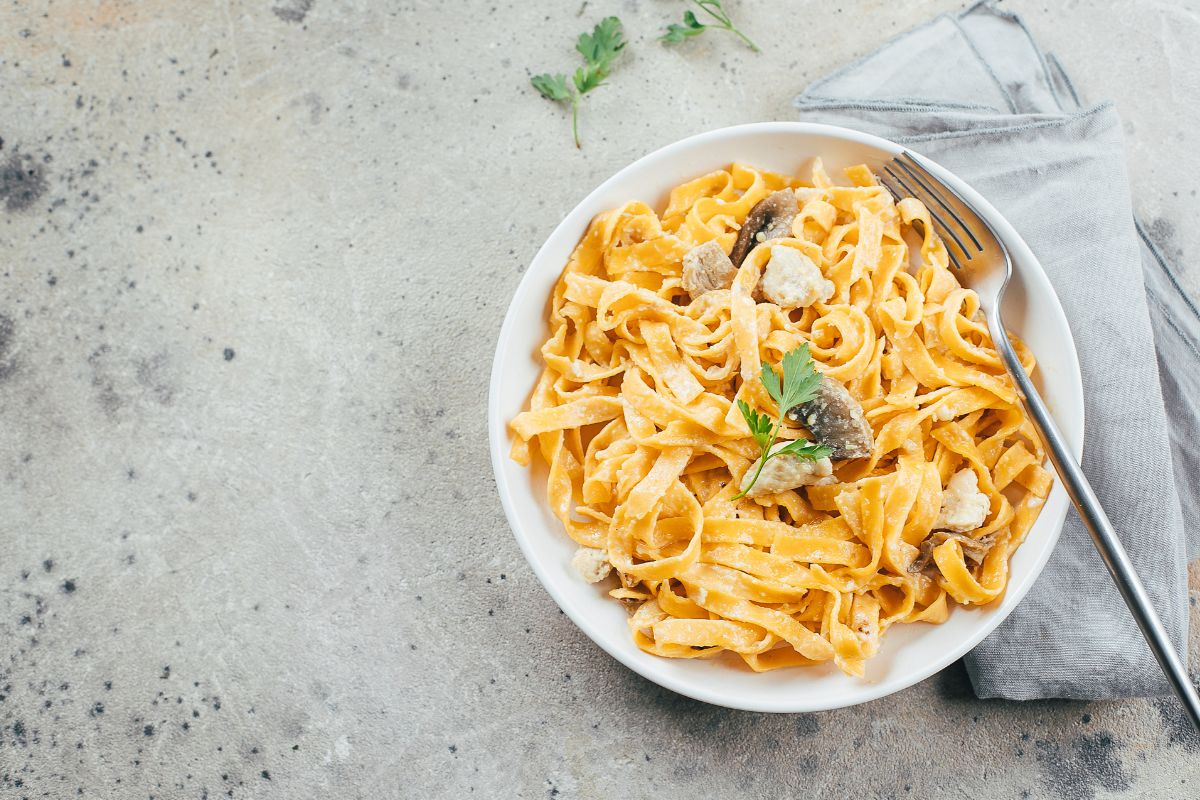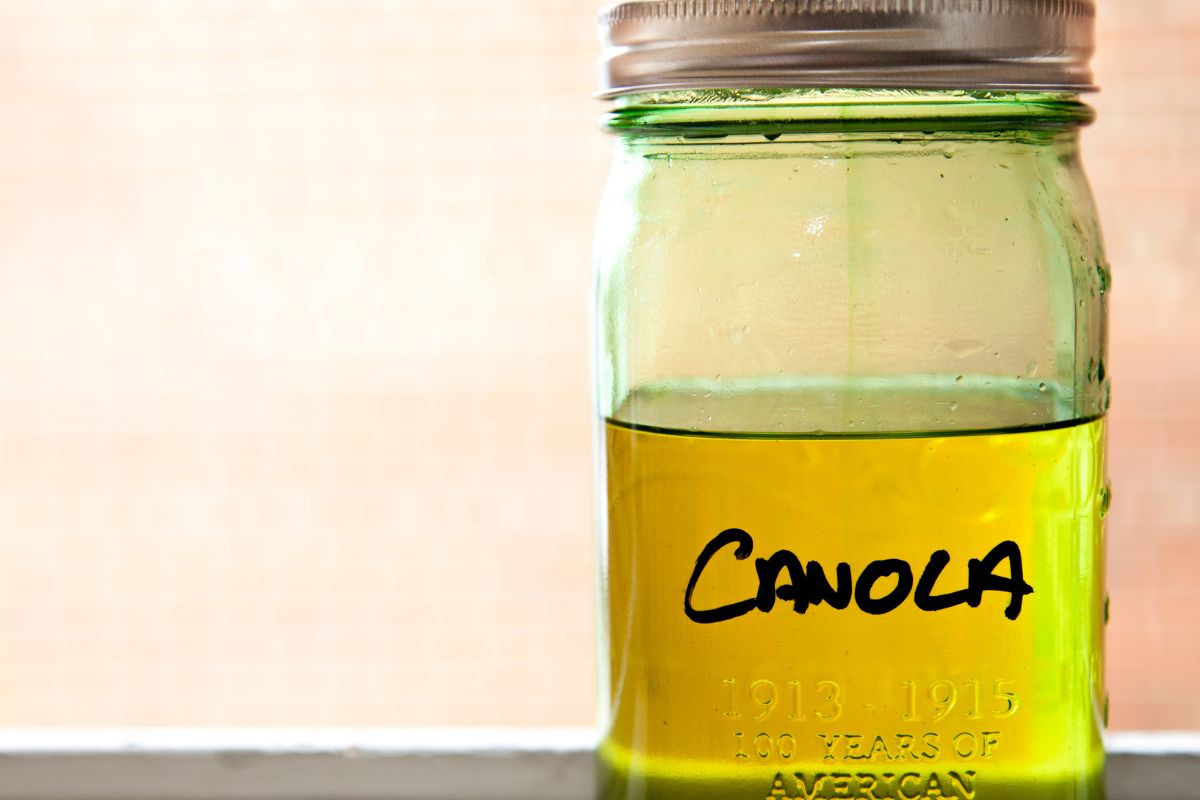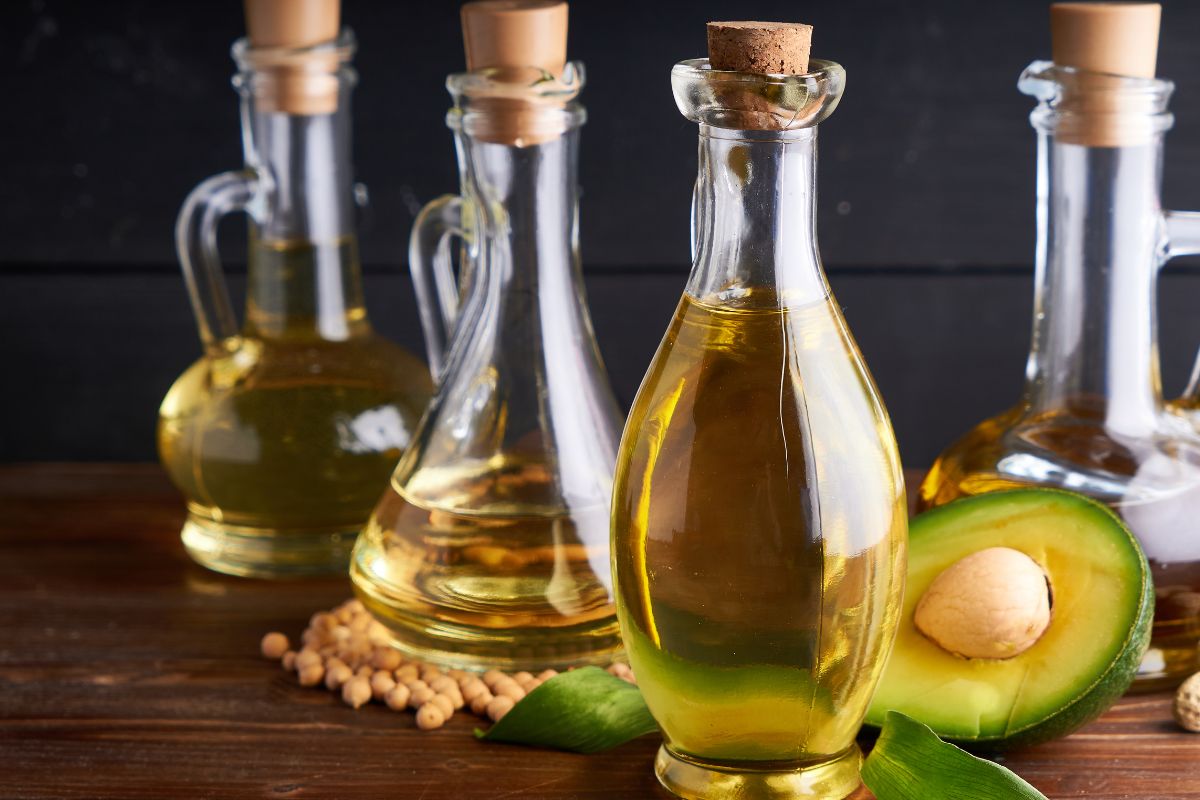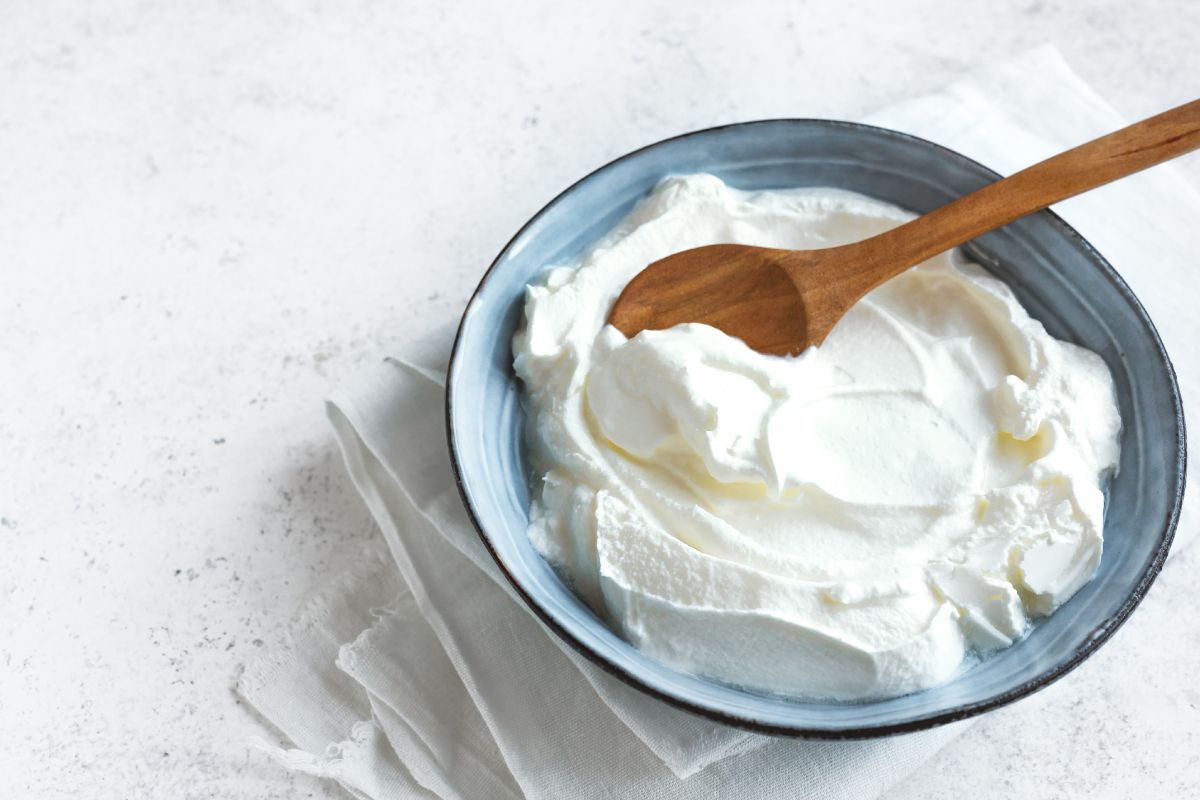Using Olive Oil and Butter Sauce for Pasta Dishes
Olive oil and butter sauce for pasta is a great combination. They help carry the flavors of the food when used in cooking, and warming them enhances this property. No oil can compete with the smooth, creamy texture of butter. Olive oil has a distinct flavor and aroma. They enhance the flavor of your foods when used together.

How to Make this Sauce
Pasta with Butter, Olive Oil, and Prosciutto
Time: 35 minutes
Prep Time: 15 minutes
Cook Time: 20 minutes
Serving Size: 4
Equipment Needed
- Bowl
- Pan
- Jar
Nutritional Facts
- Calories: 384
- Carbohydrates: 0.009 pounds (4 grams)
- Protein: 0.022 pounds (10 grams)
- Saturated Fat: 0.037 pounds (7 grams)
- Cholesterol: 5.1 pounds (23 milligrams)
- Potassium: 0.0004 pounds (224 milligrams)
- Sugar: 0.009 pounds (4 grams)
- Vitamin C: 3.3 pounds (15 milligrams)
- Calcium: 6.1 pounds (28 milligrams)
- Iron: 2.2 pounds (1 milligram)
Ingredients
- 1 pound (453 grams) of tubular 3-inch (7-centimeter) pasta
- One tablespoon of extra virgin olive oil
- One stick room temperature of unsalted butter
- One garlic clove, thinly sliced
- 1/2 pound (275 grams) prosciutto, thinly sliced Kosher salt, and freshly ground black pepper to taste
- 1/4 cup chopped fresh parsley
Instructions
- Cook the pasta, till al dente. Set aside after draining.
- Over medium heat, combine the olive oil and butter in a large saute pan. To combine, stir everything together.
- Sauté the garlic for about 2 minutes.
- Cook for another 1 minute after adding the pasta and stirring to coat well.
- Season with salt and pepper to taste.
- Cook for another minute after adding the parsley and prosciutto.
Why to Use the Two Ingredients Together
You will gain a few benefits by combining olive oil and butter. One advantage is that you are reducing your fat intake from butter. This is a positive development. The other advantage is more scientific and directly related to cooking rather than health. The smoking point of oil is higher than that of butter.
The Best Substitutes for Olive Oil in Pasta Sauces
Olive oil is a popular, heart-healthy oil that you can use to sauté and drizzle, as well as in various dressings, dips, and spreads. It’s usually one of the only oils available in Spain and Europe. This oil is also popular among health-conscious people.
But what if you run out of olive oil, can’t find it in the store, or don’t like the flavor? Fortunately, several simple ways to substitute olive oil in a punch exist.
Here are the best olive oil substitutes you can find in stores and some that you probably already have in your pantry. Some of these alternatives may even surprise you, but they work in the right situation!
Grapeseed Oil
Because of its similar nutrient value and high smoke point, grapeseed oil is an excellent olive oil substitute. It has a robust flavor and a nutty finish that is bold enough to compete with olive oil while remaining neutral. Grapeseed oil is excellent for sautéing, drizzling, and making salad dressings.
Canola Oil
Canola oil is an excellent choice for a neutral oil, though it lacks the health benefits of olive oil and is less bold. Nonetheless, canola oil contains one of the highest monounsaturated fatty acids, which are beneficial to cholesterol and blood glucose levels.
It is also a good source of vitamin E. It lacks the flavor to use as a finishing oil, but you can use it anywhere you use olive oil.

Sunflower Oil
This is another neutral oil with the same smoke point as olive oil. It’s a good source of oleic acid as long as you buy a high-quality brand to preserve the nutrient value.
Coconut Oil
Because it is solid at room temperature, liquid coconut oil is ideal for sautéing and roasting but not for dressings or dips. It will also give your dish a subtle coconut flavor. It works best in baked goods like cookies, cakes, muffins, and dishes like curry that already have a coconut flavoring.
Peanut Oil
You can use peanut oil in stir-fries, curries, and Asian dishes instead of olive oil. It has a very mild flavor and no cholesterol.
Walnut Oil
In salads and cold dishes, walnut oil is a great substitute for olive oil. However, it does not work well in hot dishes because it can become bitter. This neutral oil, like olive oil, is a good source of healthy fats.
Avocado Oil
This oil has a high smoke point, which makes it ideal for roasting and grilling. It has similar health benefits to olive oil; both are high in heart-healthy oleic acid.

Almond Oil
This olive oil substitute is high in vitamin E and an excellent choice for people who need to control their cholesterol levels. You can use almond oil instead of butter in baked goods, pasta, soups, and dressings.
Flaxseed Oil
This oil is high in omega-3 fatty acids but has a low smoke point. It works best as a substitute for olive oil in salad dressings and as a finishing touch to a meal.
Palm Oil
This oil has a rich earthy flavor, and people use it in African, Asian, and Brazilian cuisines. Palm oil is excellent in curry, noodles, stews, and other dishes. It also contains a lot of Vitamin E.
Chicken Stock
With this olive oil substitute, you’ll lose many flavors but save many calories. Chicken stock is excellent for dieters, but you should only use it as a substitute for olive oil when sautéing vegetables or meat, as it may affect the texture of your dish. Use just enough to moisten your pan and cook your food through.
Ghee
If you’ve never heard of ghee, it’s clarified butter (a process where there is the removal of almost all milk solids. This process removes lactose and casein from ghee. You can use ghee instead of olive oil in curries, rice, and pan-frying.
Butter Substitutes for Pasta Sauces
Are you planning to make butter sauce for noodles? The rich taste of butter is something you would always want in any of your meals. However, what happens when you don’t have butter? We will look at some substitutes you can use for your easy butter sauce for pasta. But first, let’s look at some types of butter:
- Sweet cream butter: It is common among people in the United States. It is most likely the butter you buy at the grocery store. You can make it with pasteurized cream (to kill bacteria); it has a mild buttery flavor and comes in salted or unsalted varieties.
- Raw butter: Raw butter is the same as sweet cream butter, except that the milk is raw or unpasteurized. Due to FDA regulations, it has a short shelf life (about ten days in the fridge).
- Cultured butter: You can make cultured butter from fermented milk (similar to yogurt) before churning. It’s complex, tangy, and tart but cooks like regular butter. Cultured butter was the only type of butter available before pasteurization and refrigeration.
- European-Style Butter: You might have noticed butter labeled “European-style” in the supermarket. European-style butter, like Plugrá, contains more butterfat—at least 82 percent—than American butter.
That means it has a richer flavor and texture. (It’s handy for making flaky pie crusts.) Most European kinds of butter are naturally cultured or have cultures added to give them a tangy flavor.
- Clarified butter: Clarified butter is made up entirely of butterfat. It’s made by slowly melting butter and skimming off the milk solids as the water evaporates. What remains is a golden liquid that can be stored at room temperature and used in higher-heat cooking methods like oil.
- Ghee: Ghee, ubiquitous in Indian cuisine, is nearly identical to clarified butter, with one key difference. It is simmered for a longer period until the milk solids begin to brown. It tastes nuttier and toastier.
- Spreadable butter or whipped butter: Have you ever tried to spread cold, hard butter on soft bread? Many brands now sell “whipped” or “spreadable” butter, which remains soft even when refrigerated due to the addition of liquid fat (such as vegetable oil).
If you lack a stick of butter or prefer not to use it, try one of these eight substitutes, many of which you most likely already have on hand. Just make sure to select your butter substitute based on the recipe:
Coconut Oil
Unrefined coconut oil has a coconutty flavor that may or may not be desired depending on what you’re making. Refined coconut oil has a neutral flavor. Coconut oil is a versatile butter replacement but shines in vegan desserts and sweet applications.
Use coconut oil in place of butter in a one-to-one ratio. While it is perfectly safe to use in cooking, it will not perform the same in baking as butter.
Cookies will be crispier, and pies will be crumblier, but cakes, quick pieces of bread, and muffins will remain unchanged. For applications such as pie crust, use cold solid coconut oil and liquid coconut oil.
Vegetable Shortening (Crisco)
It has almost no taste because it is from vegetable oil. It’s best for baking with cold or room-temperature butter and deep frying. You won’t get the delicious flavor of butter, but it will behave similarly.
Vegan Butter
It tastes exactly like butter, and we can’t believe it’s not. We prefer Miyoko’s, which is cultured like European-style butter and made from coconut oil and cashews rather than soy. However, Earth Balance is also widely available.
It is the best for everything, but it is costly. Use it when baking something that wouldn’t be the same without butter. You can use plant-based baking sticks in place of butter in any recipe, baking or not.
Olive Oil
It can taste floral, grassy, peppery, or slightly bitter, depending on the type of olive oil. Because of its distinct flavor, olive oil is ideal for baking if it’s a recipe designed specifically for it. You can substitute it for melted butter in a pinch.
Greek Yogurt
It tastes tangy, creamy, and a little yogurt. The yogurt works best in baking recipes that call for one cup of butter or less. Otherwise, the yogurt will be too moist, resulting in a dense final product. We also recommend using the full-fat version. Use Greek yogurt instead of butter in a one-to-one ratio of up to one cup.

Unsweetened Applesauce
When used as a butter substitute, applesauce tastes neutral and is virtually undetectable if it is unsweetened or “no sugar added.” Use it in place of butter in most baked goods, but because it is not fat, it will not behave the same way as butter in cooking.
Use it in cakes, cupcakes, muffins, and quick breads. You can use applesauce in a one-to-one ratio, but it may benefit from an additional fat such as olive oil or yogurt for added moisture, and the result may be denser than butter.
Pumpkin Puree
When not combined with the traditional pie spices, pumpkin has a squashy, vegetal flavor. It will be best if you use it in place of butter in baked goods, particularly those with strong flavors like cinnamon or chocolate. It’s an excellent substitute, and the pumpkin flavor will complement the recipe (like a spice cake).
In a 1:1 ratio, replace butter with pumpkin puree. Similarly to applesauce, replacing all of the butter with pumpkin puree can result in a denser finished product.
Avocado
We’re sure you’re familiar with an avocado’s rich, creamy, and slightly grassy flavor. Avocado produces a softer, chewier product, but you can use it instead of butter in most baked goods due to its neutral flavor (and it works best for cakes and quick breads). Keep in mind that it will turn everything green.
In baking recipes, you can use ripe avocado instead of butter in a one-to-one ratio, but first, you must puree it. To prevent your baked goods from browning too quickly, consider lowering the temperature of your oven by 25% and increasing the baking time.
In Conclusion
It’s difficult to beat butter’s creamy, sweet, rich flavor, whether making a homemade pie crust or frying an egg. And, despite our best efforts to keep our fridge stocked with the good stuff at all times, we occasionally—gasp—run out.
Sometimes we cook for someone who is dairy-free or vegan. Is there a good butter substitute? Yes, you now know how to make butter sauce for pasta together with substitutes for butter and olive oil. Try making a light pasta sauce at home using the recipe above, and enjoy!

Community of passionate writers and content creators who share a love for Italian heritage, culture, travel, food, and the Italian-American community. Our mission is to celebrate Italy’s rich history and traditions and connect with others who share the same passion.

